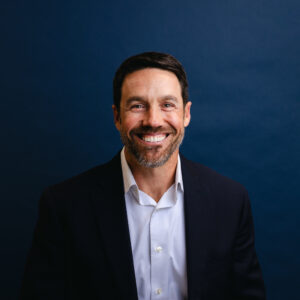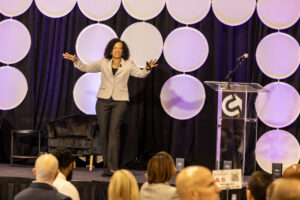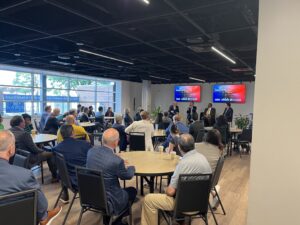By Gabe Thomas, CEO/Managing Partner, RP Communities, and past president of the Home Builders Association of Greater Chattanooga
Chattanooga is a special place. Our city has charm, character, and momentum — the kind of energy that draws families, businesses, and opportunity. It’s a place where people want to live, work, and play. But with the allure of a vibrant mid-sized city comes growth. With growth comes growing pains. And with growing pain comes something called “NIMBYism.”
NIMBY stands for “Not In My Backyard” and represents a resistance to change in one’s community. Although the NIMBY movement isn’t new, it has become far more prevalent in the Chattanooga area over the last decade. Ask any developer, policymaker, or planner, and they’ll tell you the same: Public resistance to development seems like it’s at an all-time high.
Trust me, I get it — developers are not immune to the frustration of construction. But if we aren’t careful, those seeking to prohibit development across the Scenic City could steer us away from a thriving future.
Don’t hear me say that all opposition is off base. Concerns about things like traffic, school crowding, and stormwater runoff are legitimate. But stalling growth entirely isn’t the solution.
Chattanooga is in an exciting part of its history, and the opportunities ahead of us are seemingly endless. But in order to realize the benefits our recent and future growth can bring, we have to proceed strategically.
How the Affordable Housing Crisis Affects Us All
Affordability is such a challenge that I sometimes avoid even using the term “affordable housing” and instead use “attainable housing.” Truth be told, I’m deeply concerned about the direction we’re headed when it comes to affordability. It’s never been harder for a working family to buy a home in Chattanooga — and it’s only getting worse.
The math is simple: When supply doesn’t keep up with demand, prices rise. And when prices rise, families get priced out, people leave, and more of our friends and neighbors find themselves unhoused. If we want to be a city where people from diverse backgrounds and varying professions can live, we have to focus on increasing supply.
The challenge, though, is that cost isn’t just an issue for homebuyers — it’s an issue for the people building homes, too. From the time we founded RP Communities in 2018 until now, the cost of a build from the slab up has increased by 50%, nearly to the dollar, while everything below that (think stormwater and sewer) has increased by 100%.
If you look at data related to the wealth of people who own homes vs. those who don’t, the disparity is significant. We are on the cusp of losing the reality of homeownership as a society. At RP, keeping the option of homeownership alive is one of the biggest motivators for our team.
Partnership, Not Polarization
So you’ve heard what we’re all up against. Let’s talk about some ways you can get involved in affecting positive change.
To community members, I’d say attending community meetings and approaching conversations from a partnership perspective is a great place to start. The best community meetings I’ve attended aren’t the ones where everyone agrees — they’re the ones where people show up with real concerns, clear priorities, and a willingness to listen. That’s how productive conversations happen. If your neighborhood association has a group planning a meeting, see if anyone is moderating. If not, find out if you can help field concerns ahead of time and facilitate the conversation so it’s productive.
Developers have a responsibility here, too. More than anything, I’d recommend approaching communities with empathy. Yes, developers take on huge financial risk — sometimes tens of millions of dollars — but we also know that our projects affect real people. We should always be asking: What are the real concerns of the neighbors? And are there ways we can address them?
But it has to go both ways. If the answer to any challenge is just “no” from either side of the conversation, we don’t have a partnership — we have a dead end.
What Responsible Growth Looks Like
Responsible growth means being intentional. It means looking at sewer capacity, stormwater management, tree preservation, and traffic flow before a shovel hits the ground. It means thinking through price points, density, and long-term community needs. And it means acknowledging that the way homes looked 20 years ago just isn’t viable today. We can’t keep building the same big-lot, wide-street homes and expect affordability to follow. That model, unfortunately, just doesn’t work anymore.
If we want to preserve the American dream of homeownership, especially for younger generations, we need to build smarter, denser, and more affordably. That’s the future I believe in, and the one I’m committed to creating.
No one likes construction. It’s noisy, inconvenient, and messy. But so is progress. You don’t get new schools, upgraded sewers, better roads — or that Trader Joe’s on the Southside everyone was hoping for — without first enduring the headache of change. Just like a diet or a home renovation, you have to push through the discomfort to get to the reward.
And the reward is big. More housing means more tax revenue. That means better schools, stronger infrastructure, and new opportunities for everyone.
Looking to the Future
I’ve been in Chattanooga for a long time. I’m raising a family here, and I don’t have any intention of leaving. I believe this city is at a pivotal moment — one filled with incredible potential as well as serious risk. We have a chance to become a model for responsible growth in the Southeast. But only if we’re willing to say “yes” to progress.






